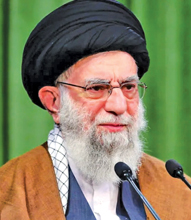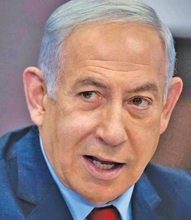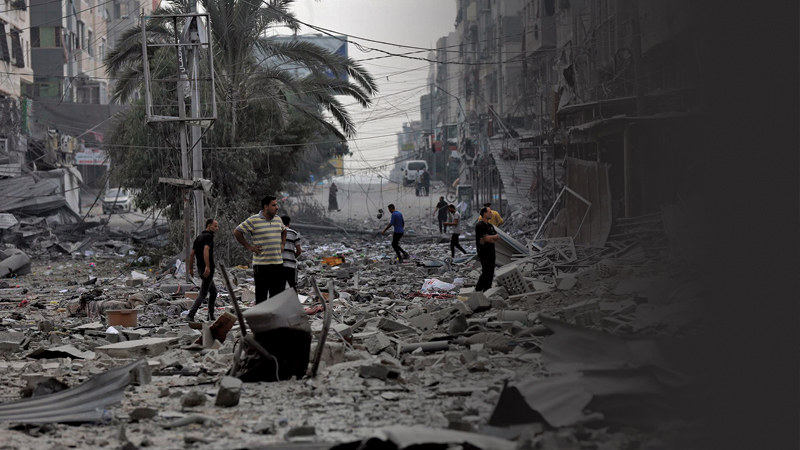Among the most significant outcomes of the 12-day Israel-Iran war was the emphatic validation of Iranian nationalism. Contrary to expectations, Iran stopped the US-Israeli juggernaut, and that, singlehandedly. It did not disintegrate as the US and Israel expected. And the US was forced to opt out of its much-touted commitment to bringing about a regime change.
Iran’s success against the heaviest of odds, could be attributed to its strong sense of nationalism, which, according to scholars, is founded on three factors – (1) pride in the Persian language, culture and Persia’s glorious past; (2) the ethos of sacrifice and martyrdom associated with Shia Islam; (3) past successes in resisting foreign hegemonic interventions.
Regime change

Ayatollah Ali Khamenei

Benjamin Netanyahu
Ever since the war began, Middle East observers had been saying that the objective of Israel and the US was not so much the destruction of Iran’s nuclear assets but effecting a regime change. The plan was to topple the Islamic regime and replace it with a pliant one headed by the son of the ousted pro-West monarch Reza Shah Pahlavi.
Israeli Prime Minister Benjamin Netanyahu, had made no secret of the objective of fomenting a rebellion against the clerics’ regime in Tehran. Making a direct appeal to the Iranian people to revolt against the Islamic regime, he said – “This is your opportunity to stand up to the regime. We are in the midst of one of the greatest military operations in history.
The Islamic regime, which has oppressed you for almost 50 years, threatens to destroy our country. The regime has never been weaker. This is your opportunity to stand up and let your voices be heard. Woman, Life, Freedom, Zan, Zendegi, Azadi. Israel’s fight is not against the Iranian people. Our fight is against the murderous Islamic regime that oppresses and impoverishes you.”
Counting on minorities
Netanyahu and the US were counting on the minority groups in Iran to rise in revolt. This was partly because minorities are almost 50 percent of the Iranian population and partly because they are the most persecuted. The Kurds make up 10 percent – 15 percent of the population. The Baloch are another five percent. Both have waged armed struggles against the Ayotollahs.
To be sure, the Islamic regime did face popular opposition after the death of Mahsa Amini, a Kurdish woman, who in September 2022, was arrested by Iran’s morality police. She died apparently due to injuries inflicted by the police. Amini’s death sparked mass protests across Iran, which the regime suppressed, even executing those arrested during the demonstrations. Leaders of minority groups touted the theory that a coalition of non-Persian ethnic groups could topple the regime in a few months. They said that unlike the Persian pro-democracy dissidents, the non-Persian anti-regime population was militarily organised.
US backs out
But when the expected coalition of minorities and other dissident forces did not fructify, the US gave up its plan for a regime change. Appearing on ABC News’s “This Week” program on Sunday, US Vice President J. D. Vance sought to downplay US involvement in Israel’s war with Iran, claiming that the US wasn’t seeking to overthrow the Iranian Government.
“We’re not at war with Iran. We’re at war with Iran’s nuclear program. We don’t want to achieve a regime change. We want to achieve the end of the Iranian nuclear program,” Vance said. The US and Iran share a long history of conflict. In 1953, the then elected Prime Minister, Mohammad Mosaddegh, was overthrown by the British and the Americans using the CIA because Mosaddegh sought to audit the accounts of the Anglo-Persian Oil Company. Once firmly under the pro-West ruler, the Shah, the US aided Iran to get nuclear technology for peaceful uses.
But the partnership came to a halt in 1979, when the Islamic Revolution overthrew the Shah. Among the motely group of anti-monarchists, the Shia clerical group (Ruhaniyat), led by Ayatollah Ruhollah Khomeini, proved to be best organised and capable of providing leadership both in the urban and rural areas.
Ayatollah Khomeini took over and transformed Iran into an Islamic republic. As expected, the regime was markedly anti-US (dubbed the Big Satan) and anti-Israel (dubbed the Little Satan). It also called for the export of the Islamic revolution. US-Iran relations further worsened in 1979 when 52 Americans were taken hostage from the US Embassy in Tehran and held for 444 days.
The 1980s saw tensions spike further with the outbreak of the Iraq-Iran war in which the US backed Iraq. Sanctions and standoffs in the Strait of Hormuz followed. In 1988, an Iranian mine nearly sank a U.S. warship. In response, President Ronald Reagan ordered retaliatory attacks.
Ayotollah Ali Khamenei
Ayatollah Khomeini died in 1989 and his successor, Ayatollah Ali Khamenei, began ruling Iran using a mix of policies. It was both Jihadi (combative) and Ijtihadi (pragmatic). Khamenei emphasised self-sufficiency and defence capability.
The Shia Islamic concept of martyrdom and loyalty were at the heart of his actions, which also appealed to the majority of Iranians. The idea that Iranians should not bow to the US or Israel under any circumstances, was drilled into the collective psyche.
After the September 11, 2001 Twin Tower attacks in the US, President George W. Bush labelled Iran as “one-third of the axis of evil,” alongside Iraq and North Korea.
Killing of Gen. Soleimani
But come 2015, the US under President Obama, the world, and Iran, signed a nuclear deal, which aimed to limit Iran’s nuclear program in exchange for sanctions relief. It was hailed as a breakthrough. However, President Donald Trump withdrew from the deal in 2018.
In 2020, the US killed Gen. Qasem Soleimani with a drone for “plotting imminent and sinister attacks” against the US. The Middle East was embroiled in proxy wars.
This month, Israel and the US bombed Iranian nuclear facilities. But after 12 days of widespread destruction wrought by both the US-Israel combine and Iran, President Trump said on social media that a “complete and total ceasefire” had been consented to.
To be sure, many Iranians were discontented with the Islamic regime, but there was no organised opposition to it. The son of the former Shah, crown prince Reza Pahlavi, was projected as the alternative leader. But since he lives in the US, he is seen by Iranians as a US lackey.
Over the years, Iran has faced foreign interventions, given its strategic location and oil wealth. But it has held together and defeated the intruders. The adhesive factors, as stated earlier, have been Shia Islam, pride in the Persian language, culture and historical achievements, and centralised authority.
Shia Islam, and not secularism, is the main component of the Iranian identity. The homogenising influence of Shia Islam has helped override ethnic and tribal loyalties, which are a bane in the neighbouring Arab countries. In fact, Shia Islam itself was an act of defiance to the Ottomans’ cultural onslaught. Shia Islam is not only a religion but a historical movement opposing forces perceived as undermining Iran’s power.
Khomeinism
‘Khomeinism’ has been another name for Iranian nationalism since 1979. It is a nativist alternative to Western culture and Western- style secular and democratic politics. In fact, Iran has never had a Western-style democratic system to be a native reference point. Khomeinism urges Iranians to look inwards into their own history and religious traditions to formulate their concept of nationalism.
Hence its wide appeal. Iran is very conservative in many ways but it is also modern, seeking modern pathways to progress while adhering to traditional, Islamic and Iranian values. The Iran-Iraq war from 1980 to 1988, helped entrench the Islamist regime. And continued US animosity has kept Khomeinism alive and kicking. The most recent frontal attack on Iran staged by the US-Israeli coalition only strengthened Iranian nationalism.







